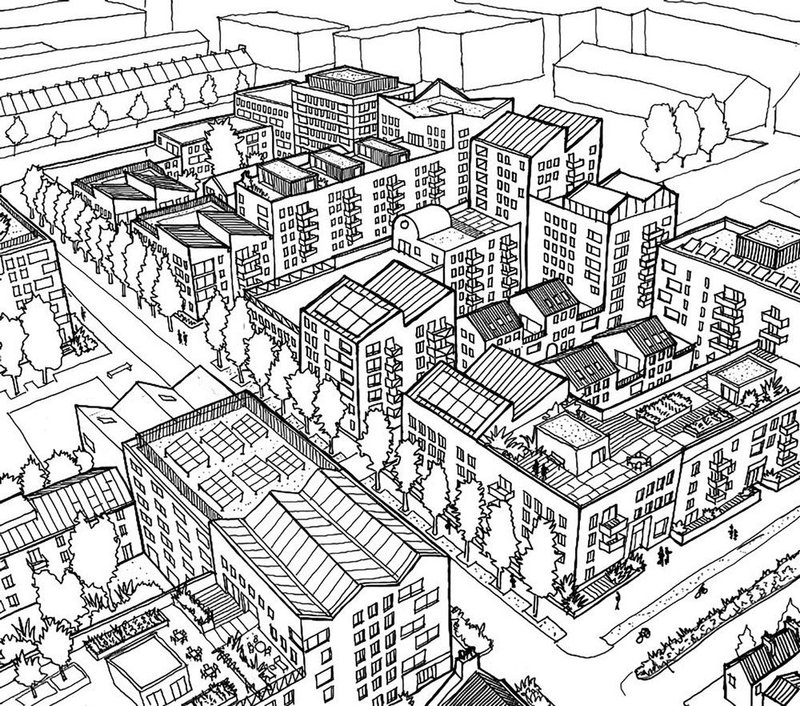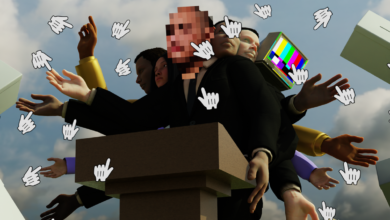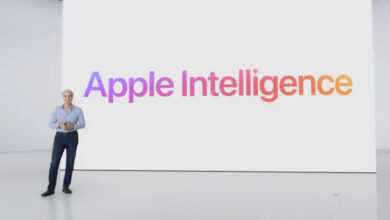Architects tap in to Gen AI for design and business efficiencies

From supercharging ideas to cutting the cost of visualisations and de-stressing admin tasks, generative AI tools are reshaping architectural practice with long term implications for the profession
Debate on how computers can transform design, and which tasks they should and should not be allowed to perform, has raged for over half a century, and the advent of an advanced new generation of artificial intelligence has galvanised interest in the topic like never before.
Generative AI (also referred to as Gen AI and diffusion AI) image generators, such as Midjourney, Stable Diffusion and DALL.E, and large language models like ChatGPT and Claude 3, started out as impressive technological curiosities, but have rapidly evolved into powerful applications used by many architects to tackle design and administrative tasks.
Trained on massive datasets, image generators only require simple text prompts to produce wild and unconventional architectural concepts, while ChatGPT’s neural net can interrogate and compose written documents and even write software code in a matter of seconds.
According to a survey published by the RIBA in February, a significant 41% of practices are now using some form of AI regularly on projects, and more than half of those are using Gen AI sometimes, often or always. The most common application, which is used by 70% of AI adopters, is for early design-stage visualisations.
Rogers Stirk Harbour + Partners (RSHP) has been testing AI programs and tools in various departments and a key benefit for designers has been the ‘instant inspiration’ afforded by diffusion AI in the early design stages.
‘Where before we relied mostly on individual and collective experiences and memories for inspiration, image-based Gen AI tools draw on a wide pool of existing data and information to throw up lots of ideas, reducing the time that would have been spent trying to find that inspiration,’ says Haaris Ramzan, project technology expert and data engineer at RSHP.

However, there is a concern that machine-generated ideas shouldn’t steer RSHP’s designs too heavily and distort its signature style. For this reason, the practice favours the workflow of Stable Diffusion, which allows architects to feed in their own sketches to more precisely control the generated output.
The software’s ControlNET neural network allows users to set a range of extra conditions to fine tune results and can even riff on uploaded 3D architectural models, photos or renders of previous works to create results more appropriate to architectural processes.
Another Gen AI tool tailored to architecture is Look X, whose large language model is trained on the architectural database ArchiNet and exploits in-house algorithms designed to be more applicable to architecture. Architect and former Zaha Hadid Architects (ZHA) employee Tim Fu, director of Studio Tim Fu, recently used the tool to turn a photo of crumpled paper into images that evoke designs by architects Frank Gehry and ZHA.
‘Using Gen AI we can insert our own proprietary office works, sketches and designs, mixed with existing data, to create this hybrid system,’ says Fu, ‘And the machine gets better as we feed it and update it as the office progresses.’
The ease of use of text-to-image technologies makes them a potentially speedier alternative to the production of mood boards, abstract renders or other media, which can give clients earlier insights into the conceptualisation and review process.
ZHA was an early adopter of Gen AI, initially through the Architecting the Metaverse collaboration with art studio Refik Anadol Studio, and now routinely uses the software to help generate ideas at the start of most projects.
According to Shajay Booshan, associate director and head of computation and design at ZHA, the tools help architects to explore morphological ideas, the materiality and lighting of spaces, and ‘critically’ to help visualise the use of spaces by different human groups.
‘Although these technologies sometimes make comical errors, such as placing people in suits in swimming pools, user experience design is an extremely important aspect of architectural design, which has been ignored by previous technological revolutions, including algorithmic design, CAD and BIM, ‘ says Booshan.
As designs progress, the production of architectural CGI renders – involving processor-intensive ray tracing, touch-up work in Photoshop and other tools – is time-consuming work that’s typically outsourced to visualisation companies.
The ease of use of text-to-image technologies makes them a potentially speedier alternative to the production of mood boards
Gen AI is shifting the dial by allowing architects to do this work themselves and in a fraction of the time. According to Fu, where a render company might ‘require a few weeks’ to build optimised models and create final renders, based on a few rounds of feedback from designers, using Gen AI to create the models in-house makes it possible to render ‘almost in real-time’.
‘It means we can make qualitative decisions without renderers acting as the middlemen in the design communication process, so our small design team can remain competitive against larger enterprises,’ says Fu.
This highlights how Gen AI is both enabling efficiencies but also posing risks to those whose jobs can be automated. Is there a long term danger to architects? Over a third of respondents to the RIBA survey (36%) said they think AI is a threat to the profession, while 46% said they anticipate negative effects on employment opportunities, versus 22% who predict positive effects.
Several factors are limiting Gen AI’s current impact on the profession. Midjourney and Stable Diffusion might create beautiful hallucinations of buildings, based on patterns and structures observed in real life, but designing actual buildings to context and to program requirements still demands intense human involvement.
They don’t yet deliver precision to tolerances or three dimensional accuracy delivered by drawings, models, plans and sections, or take into account construction materials, or the integration of structure and mechanical services.

‘We’re currently in a weird Wild West with AI, where nobody has established the rules or the boundaries, so it’s understandable that people are worried that it could be taking over, ‘ says Des Fagan, head of architecture at Lancaster University and a member of RIBA’s expert advisory group on AI. ‘We haven’t really had much pushback yet from architects saying “we really need things verified and accurate”.’
One area where Generative AI is expected to have a mostly welcome effect on architects’ processes is in removing some of the leg work from administrative processes on projects.
ChatGPT’s large language model is groundbreaking, but its answers to questions are often generic and lack the accuracy needed for use in specific fields. OpenAI has addressed this shortcoming by allowing companies to create their own custom GPTs for use in domain-specific settings. By feeding custom GPTs specific knowledge and configuring them to perform specific tasks they can better analyse the data and generate useful responses.
For architects that could mean training a bot to compare tender returns on a spreadsheet, to review a body of reports, or creating novel RfP draft responses based on stock answers and project case studies.
‘People are seeing lots of potential for custom GPTs in the bidding stage, but I think we’ll see them across all areas of practice, ‘ says Keir Regan-Alexander, an expert in Gen AI and Principal at creative consultancy Arka Works. ‘For example, very soon we will be querying and conversing with policy documents, including HR and operational policies in a GPT format.’
We’re currently in a weird Wild West with AI, where nobody has established the rules or the boundaries
Arka Works developed an experimental Building Safety Act Bot, a custom GPT created to ‘understand’ the regulations and provide contextual responses to any query about how they apply to a project.
The bot is trained specifically on all publicly accessible government guidance on the new Building Safety Act, as well as Part B Fire Safety Regulations (wording only) and supplementary HSE guidance about how the act affects CDM regs.
‘You don’t get generic vanilla answers from a custom GPT, you feed in your practice information or your project information in a private environment, then it becomes an expert in that body of knowledge, projects or documentation,’ says Regan-Alexander, ‘They will proliferate across various parts of practice and projects used for anything to do with synthesizing text and reports.’
However, organisations need to be wary of the information they feed in to custom GPTs, says the architect, as only paying for a GPT team or GPT enterprise account guarantees that uploaded information is ‘airlocked’ and is not being harvested.
Such issues of data privacy, alongside the wider ethical and societal impacts of AI, will steer the ongoing debate over future applications for the technology to architecture and beyond.



